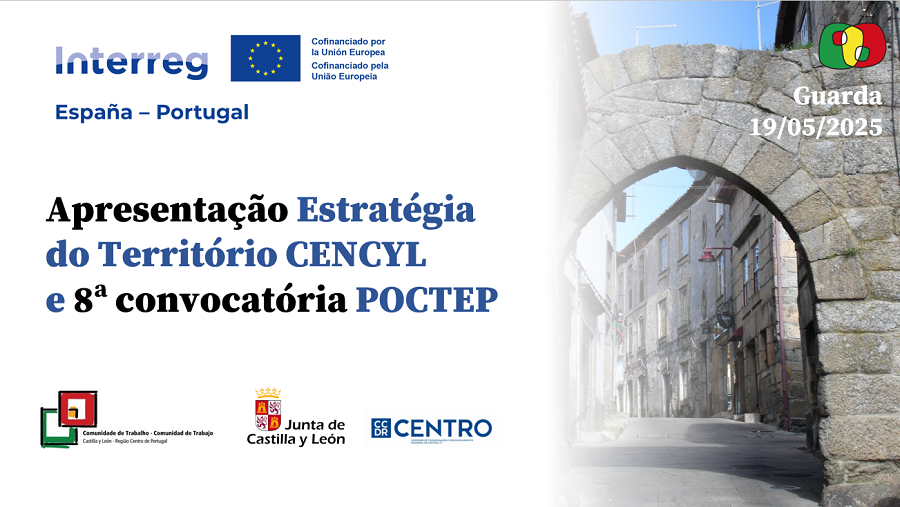Source: CENCYL Working Community
On 19 May, the city of Guarda hosted the public presentation of the multisectoral OP5 CENCYL strategy (Strategy for the Enhancement of the Natural and Environmental Heritage of the Cross-Border Territory), developed within the framework of the Centro de Portugal–Castile and León Working Community.
The session also included the presentation of the 8th call for projects under the Interreg Spain-Portugal Programme (POCTEP) 2021-2027, along with the dissemination of a series of relevant projects linked to this strategy, aimed at supporting the preparation of strong applications.
OP5 CENCYL Strategy and 8th POCTEP Call
The day aimed not only to introduce the OP5 CENCYL strategy but also to present the 8th Interreg POCTEP call, aimed at cross-border cooperation projects involving entities on both sides of the border aligned with the OP5 CENCYL strategy (see PDF document), among other multisectoral strategies approved by the Programme.
The 8th call has a total budget of €23.9 million ERDF. The call’s guidelines will be published shortly, with interested parties expected to submit their applications by 30 June 2025.
To encourage the formation of strong partnerships, the session included a segment showcasing ongoing cooperation projects that can serve as inspiration or good practice references for the upcoming POCTEP call.
Seven Protected Areas in the CENCYL Space
OP5 CENCYL aims to develop an intervention strategy for seven protected natural areas located along the border between the Centro region of Portugal and Castile and León:
🇵🇹 In Portugal:
-
Faia Brava Private Protected Area
-
Serra da Estrela Geopark
-
Serra da Gardunha Protected Landscape
🇪🇸 In Spain:
-
Serra da Malcata Nature Reserve
-
El Rebollar
-
Campo de Azaba and Campo de Argañán
-
Biosphere Reserve of the Béjar and Francia Mountain Ranges
These are unique areas that give identity to the border territory, not only for their environmental values but also for their cultural, historical, and ethnographic characteristics. The strategy promotes networking to create a genuine cross-border cooperation space that goes beyond mere geographic proximity by establishing physical connection points between the identified protected areas.
OP5 CENCYL adopts an integrated, multisectoral approach, recognising that natural heritage should be managed collectively, transcending administrative borders, from a true cross-border cooperation perspective.
📷 Guarda (FOTO: Wikimedia Commons





